Installation of windows according to gost: installation
Customers who order the manufacture and installation of windows in numerous window companies are interested in the quality of the installation, whether the workers carry out the installation of windows according to GOST, whether all requirements are met. And this is really important, because it directly affects the quality and service life.
What are the requirements for installing windows GOST
GOST regulates all actions concerning the installation of the window. This document defines:
- characteristics of materials used for the manufacture of windows, mounting seam, fasteners;
- types of fasteners and insulating materials;
- the size of the mounting clearances and the distance between the fasteners depending on the materials and the size of the window being installed;
- permissible deviations from ideal indicators;
- the order of performance of work.
The main requirement that is imposed on the installation seam is complete tightness. This is ensured by the consistent organization of 3-4 layers: noise insulation, thermal insulation, waterproofing and vapor barrier.
The size of the mounting gap differs depending on how the window is installed. If the window is installed in an opening with a window quarter, then the frontal gap for PVC windows of white color should be 10-20 mm. The end gap depends on the size of the window unit. If the window unit is less than 2000 mm, then the end gap will be - 20-60 mm, if more, then 25-60 mm.
Anchoring plates and frame anchors can be used as fasteners. It is more logical to use anchor plates in openings with window quarters, and frame dowels in quarterless openings, as more secure fastenings.

In the case of using the PSUL tape in the opening without quarters according to GOST, it is covered with splices. It is possible to replace the tape PSUL on vapor-permeable sealant.
The distance between fastenings for PVC windows from a white profile is usually 700 mm, for a window box more than 62 mm wide, the distance is reduced to 600 mm.
For sealing of the window block, mounting foam, diffusion membranes and vapor-insulating tapes from butyl rubber, nonwoven materials are used. Their labeling: PSUL, BC (BC +), VM (BM +) and others. PSULs are used in those places where the organization of an airtight, but vapor-permeable seam is necessary. The aircrafts and aircrafts are designed for vapor barrier insulation of slopes trimmed with plastic (VS) and plaster (VM).
Note! At temperatures below 5 degrees, it is necessary to use winter varieties of foam.
As for the order of performance of work, the instruction with the photo is presented below.
Preparatory work prior to the installation of the window unit
Before the direct installation of the window unit, a significant amount of preparatory work should be carried out, provided for by GOST.
 | The opening into which the window will be installed is thoroughly cleaned of dust and dirt. All trash is swept away with a brush. |
 | Then, the slopes are treated with a primer, which is designed to increase the adhesion of materials and prevent the outer layer from shedding. |
 | Now you should remove the extra items from the window. They remove the sash, overhead elements, for security purposes, and double-glazed windows are removed. This is necessary in order to make the window unit easier and to prevent damage to the glass. |
 | Then paste the self-expanding sealing tape PSUL into the groove of the window base profile. This ensures the required quality of contiguity. |
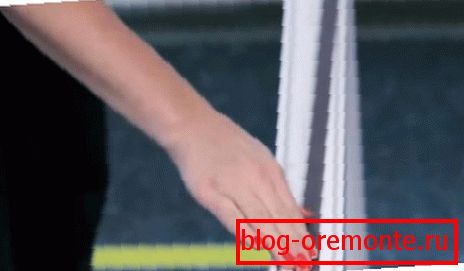 | If the structure is supplied with a balcony block, the individual elements are also sealed with PSUL tape. Tapes stick on the balcony block. The gluing point is hidden by the connecting profile and the PSUL is again glued. Then the next block joins. |
 | Make markup for fasteners. The distance between them for a standard-size window made of white PVC is 700 mm, while about 180 mm should be removed from the corners. |
 | The hole for the screw should be slightly less than the diameter of the screw itself. |
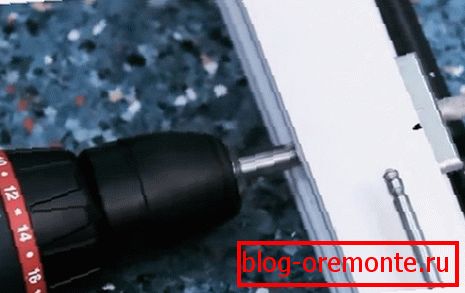 | Drilling is carried out from the outside, first with a drill of a smaller diameter. This avoids breaking the hole. |
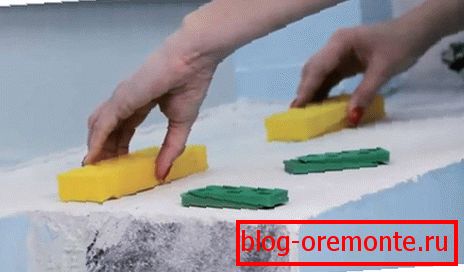 | Then the bottom pads are installed on the lower slope. They must be present in places with vertical elements. |
Installation of windows with the use of vapor barrier tapes according to GOST: step by step instructions
Installation according to GOST is carried out with the use of vapor barrier and vapor-permeable tapes, differing in materials and functions performed, therefore, this process is given special attention.
| Markup under PSUL | |
 | First install the tape PSUL, designed for the device vapor-permeable mounting seam from the outside. This tape is made of polyurethane and is able to expand after unwinding the coil in which it is delivered. |
 | The window unit is pre-leveled using assembly wedges. |
 | Pencil draw a line around the perimeter of the window, noting the junction of the outer slope and window profile. This line defines the location of PSUL. |
| Installation of tapes from the outside and inside | |
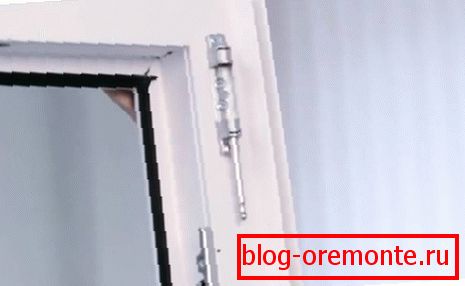 | If the slope will be finished with plastic, a special profile is latched to the box, which serves to attach the slope. |
 | Stepping back from a line of about 5 mm, a PSUL tape is glued to the outside of the profile. |
 | To the side and top profiles stick vapor barrier tape BC. It is designed to seal plastic and drywall slopes. In the corners, the tape is glued together with the inner sides to each other. The resulting piece of free tuck. |
| Fixing the window block | |
 | The window is finally installed in the opening, aligned, fixed with the help of distance and support blocks. The tape PSUL should be pressed against the window quarter to ensure a compression ratio of about 25%. Now in the wall drilled holes for the anchor. |
 | Dowels are hammered into the wall. |
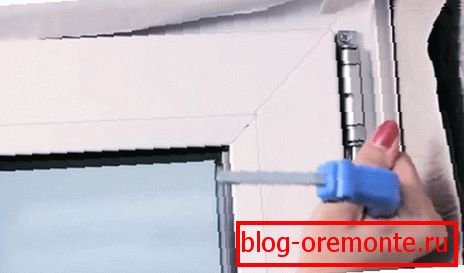 | Installed window sash. |
| Thermal insulation with polyurethane foam | |
 | The best sealant to fill the joints will be polyurethane foam assembly with a low coefficient of expansion. The foam is applied to a wetted surface. |
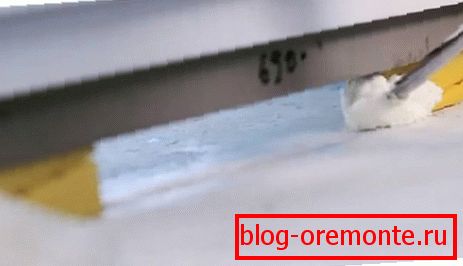 | The seam is filled to 70%, if the seam depth exceeds 5 cm, then the filling is carried out in layers. |
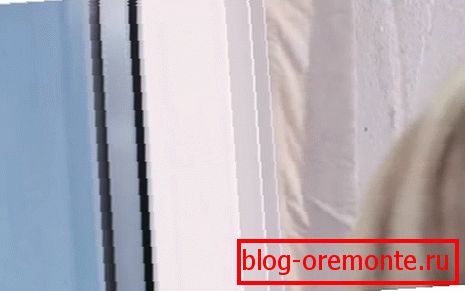 | Steam insulation tape is glued to the inner slopes. |
| Installation of vapor-permeable and vapor barrier tape on the bottom profile and the installation of reflux | |
 | On the inner side of the window, the assembly seam is sealed with metallized insulation tape. |
 | A diffusion tape is glued to the outer side, to the location of the outflow, which conducts moisture in one direction - from the inside, and pushes it from the other side - from the outside. |
| Installation of a windowsill | |
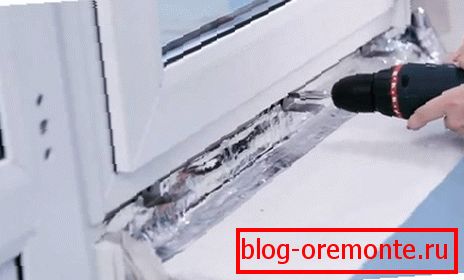 | Sill is fixed on the bracket. They are attached over electrical tape. |
 | The window sill is installed on the mounting wedges and polyurethane foam previously applied to the wetted surface. And it should be applied loosely, leaving room for expansion. Otherwise, the window sill will rise. |
 | The sill is leveled. Minimum slope is made towards the room. Subsequently, something heavy should be put on it so that it does not rise under the action of the expanding foam. |
| The final stage | |
 | Slopes are inserted into grooves and fixed. A decorative overlay is installed on top. |
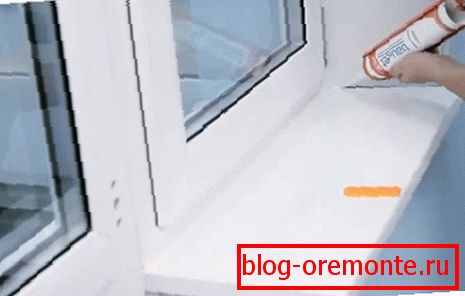 | The joints between the sill and the window unit, between the sill and the slopes are sealed with silicone sealant. Excess trim with a spatula with a slight pressure. |
 | Install the fittings, in particular handles, strips, decorative covers on the hinges. |